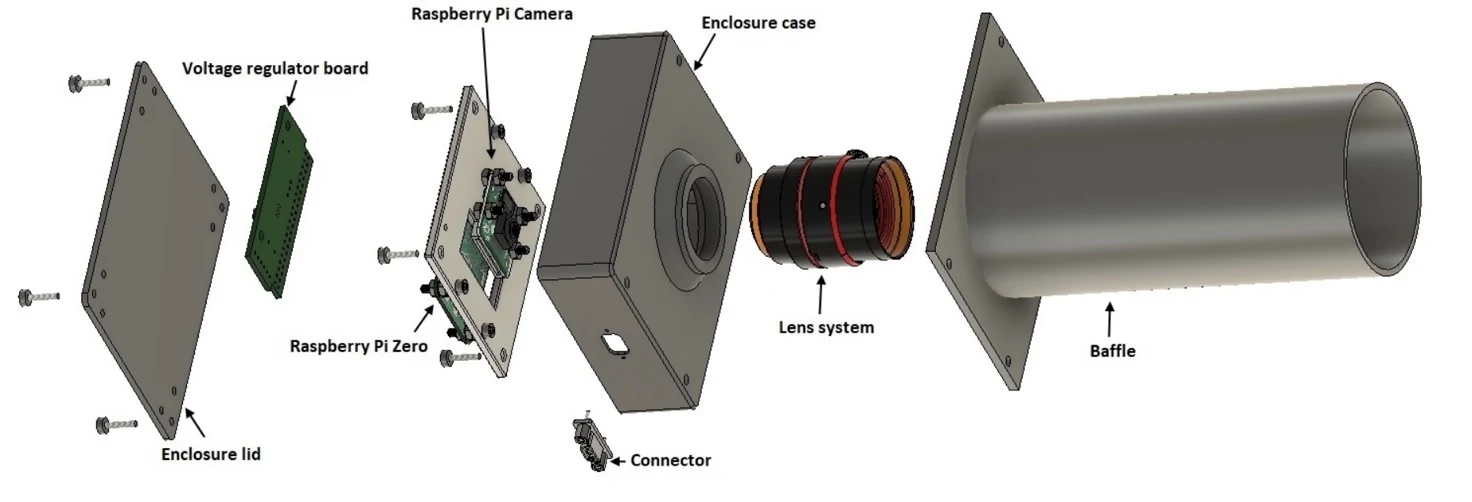
A new low-cost star sensor developed by Indian Institute of Astrophysics (IIAstrophysics) astronomers' group, from off-the-shelf components was recently launched by ISRO on board PSLV C-55.
StarBerrySense is capable of finding its pointing direction in space by identifying the stars in its field of view.
In its first-ever space test, StarBerrySense is mounted on the PSLV Orbital Experimental Module (POEM), and is performing well. The initial data has now validated its design as well as its function.
StarBerrySense, an indigenously developed small space Instrument can calculate where it is pointing to. The space instrument is a creation of Space Payloads Group at IIAstrophysics, Bengaluru. This group builds low cost space payloads for Astronomy and perform in-house design, integration, validation and calibration of space instruments.
StarBerrySense's hardware design is based on Raspberry Pi, a tiny, affordable and open-source credit-card sized computer initially used by hobbyists and now for various IoT and business applications.
 |
StarBerrySense not only withstood the harsh conditions in space and is functioning as expected, the initial data shows that it is able to calculate the pointing direction.
“This payload is built around the well-known minicomputer RaspberryPi, and the electronics and software were designed in-house,” said Bharat Chandra, the technical lead of the project and a Ph.D. student at the Indian Institute of Astrophysics. “The advantage of this payload is that it is cost-effective, simple to build, and can be deployed on a wide variety of satellites,” he added.
“StarBerrySense was mounted on ISRO's PSLV Orbital Experimental Module (POEM), which provides a stable platform for our payload to operate from. POEM is a unique initiative by ISRO that utilises the spent 4th stage of the PSLV as an orbital platform for carrying out scientific experiments. It is an excellent opportunity to conduct short-term scientific experiments in space,” said Rekhesh Mohan, the Principal Investigator of the StarBerrySense project.
“This payload is built around the well-known minicomputer RaspberryPi, and the electronics and software were designed in-house,” said Bharat Chandra, the technical lead of the project and a Ph.D. student at the Indian Institute of Astrophysics. “The advantage of this payload is that it is cost-effective, simple to build, and can be deployed on a wide variety of satellites,” he added.
“StarBerrySense was mounted on ISRO's PSLV Orbital Experimental Module (POEM), which provides a stable platform for our payload to operate from. POEM is a unique initiative by ISRO that utilises the spent 4th stage of the PSLV as an orbital platform for carrying out scientific experiments. It is an excellent opportunity to conduct short-term scientific experiments in space,” said Rekhesh Mohan, the Principal Investigator of the StarBerrySense project.
 |
| POEM |
The primary objective was to assess its survivability and performance in space. “The flight qualification tests were done at the MGK Menon Laboratory for Space Sciences, located in the CREST campus of the Indian Institute of Astrophysics at Hosakote. Sky imaging tests were conducted at our Vainu Bappu Observatory”, said Binukumar, former visiting scientist at IIA and a member of the StarBerrySense team. “During the days following the launch, we have verified that StarBerrySense is performing as expected in space,” said Shubham Ghatul, a Ph.D. student in the team.
The main function of StarBerrySense is to image the field of view, correctly identify the stars it sees, and calculate the pointing direction. Shubhangi Jain, a Ph.D. student in the team, said, “Analysis of the preliminary data has confirmed that the imaging equipment works as expected, and the onboard software is able to calculate the pointing direction."
Mahesh Babu, an electronics engineer with the team, added,"Using the images received from the payload, we are verifying its accuracy by comparing with data from international databases."
“Working with the PSLV team was a great learning experience for the whole team. Guidance and support from IN-SPACe was also invaluable in this successful venture,” added Rekhesh Mohan.
The team also consisted of Margarita Safonova (DST Woman-Scientist) and Jayant Murthy (Visiting Professor).The primary objective was to assess its survivability and performance in space. “The flight qualification tests were done at the MGK Menon Laboratory for Space Sciences, located in the CREST campus of the Indian Institute of Astrophysics at Hosakote. Sky imaging tests were conducted at our Vainu Bappu Observatory”, said Binukumar, former visiting scientist at IIA and a member of the StarBerrySense team. “During the days following the launch, we have verified that StarBerrySense is performing as expected in space,” said Shubham Ghatul, a Ph.D. student in the team.
The main function of StarBerrySense is to image the field of view, correctly identify the stars it sees, and calculate the pointing direction. Shubhangi Jain, a Ph.D. student in the team, said, “Analysis of the preliminary data has confirmed that the imaging equipment works as expected, and the onboard software is able to calculate the pointing direction.” “Using the images received from the payload, we are verifying its accuracy by comparing with data from international databases,” Mahesh Babu, an electronics engineer with the team, added.
“Working with the PSLV team was a great learning experience for the whole team. Guidance and support from IN-SPACe was also invaluable in this successful venture,” added Rekhesh Mohan. The team also consisted of Margarita Safonova (DST Woman-Scientist) and Jayant Murthy (Visiting Professor).
PSLV-C55 is a Dedicated Commercial PSLV mission of NewSpace India Limited (NSIL), for the international satellite customer from Singapore. In this mission, TeLEOS-2 a Synthetic Aperture Radar satellite will be the primary satellite and Lumelite-4 an Technology Demonstration nano-satellite will be co-passenger satellite. This is the 57th flight of PSLV and 16th mission using the PSLV Core Alone configuration (PSLV-CA). PSLV-C55 adopted “Integrate, Transfer and Launch (ITL)” concept using PSLV Integration Facility (PIF).








 IndianWeb2.com is an independent digital media platform for business, entrepreneurship, science, technology, startups, gadgets and climate change news & reviews.
IndianWeb2.com is an independent digital media platform for business, entrepreneurship, science, technology, startups, gadgets and climate change news & reviews.
No comments
Post a Comment